 The rotator cuff is the group of four tendons and related muscles that form a protective barrier around the shoulder. This significant and strong group stabilizes the shoulder ball-and-socket joint and allows the shoulder to rotate. Rotator cuff injuries are common in sports that involve overhead rotation of the shoulder, such as baseball, swimming, and golf. Overuse or injury of the shoulder causes tears in the tendons that hold the rotator cuff to the shoulder and arm bones. Depending on the extent of rotator cuff damage, the tendons may be partially torn, completely torn, or completely wasted away leading to shoulder arthritis. Symptoms of rotator cuff disease include pain over the outside part of the shoulder, difficulty putting clothes on, and pain with overhead movement. An X-ray and a MRI are usually done to confirm a tear in the rotator cuff.
The rotator cuff is the group of four tendons and related muscles that form a protective barrier around the shoulder. This significant and strong group stabilizes the shoulder ball-and-socket joint and allows the shoulder to rotate. Rotator cuff injuries are common in sports that involve overhead rotation of the shoulder, such as baseball, swimming, and golf. Overuse or injury of the shoulder causes tears in the tendons that hold the rotator cuff to the shoulder and arm bones. Depending on the extent of rotator cuff damage, the tendons may be partially torn, completely torn, or completely wasted away leading to shoulder arthritis. Symptoms of rotator cuff disease include pain over the outside part of the shoulder, difficulty putting clothes on, and pain with overhead movement. An X-ray and a MRI are usually done to confirm a tear in the rotator cuff.
Based on the degree of rotator cuff injury, Dr. Shani will discuss both surgical and non-surgical options for repair. In less severe injuries, symptoms from rotator cuff damage may improve and strength regained with approximately one to three months of physical therapy. For more advanced injuries, Dr. Shani performs rotator cuff surgery to repair the tendons. These orthopedic-surgery are arthroscopic procedures, a non-invasive technique with a fast recovery time. Surgery is performed with pencil-thin medical instruments through small incisions made around the shoulder blade. In the case of partially torn tendons, Dr. Shani shaves off and smoothes damaged pieces of tendon. This allows the rotator cuff to move unhindered by small tendon frays. In complete tendon tears, Dr. Shani surgically reattaches the damaged tendons to the shoulder bones. This replaces the tendon in its natural position and restores a natural level of tension. If the point of the shoulder blade is blocking full movement of the rotator cuff, Dr. Shani shaves off portions of bone or removes bone spurs to allow the rotator cuff and shoulder full range of motion.
Following the protocol set forth by Dr. Shani and the physical therapist for six to eight months, patients work to strengthen the muscles and tendons in the rotator cuff. The arm is kept in a sling for about one to two months, and full range of motion may return to the shoulder after three months. At three months after surgery, a strengthening program is begun. After seven months of physical therapy and consultations with Dr. Shani, most patients return to pre-injury level of sport.




